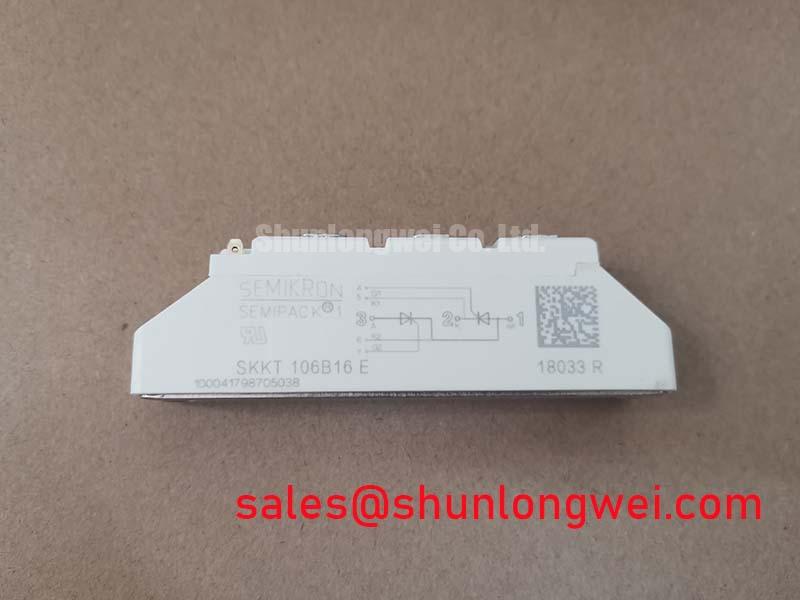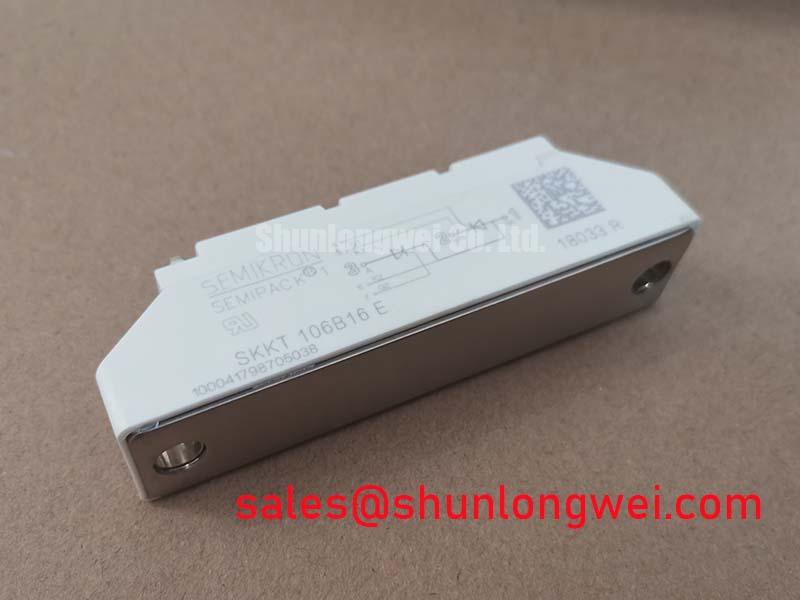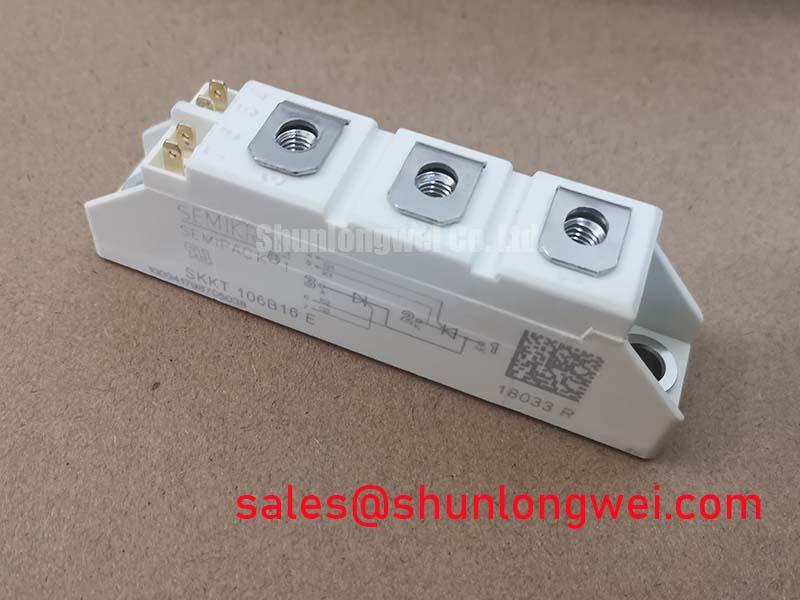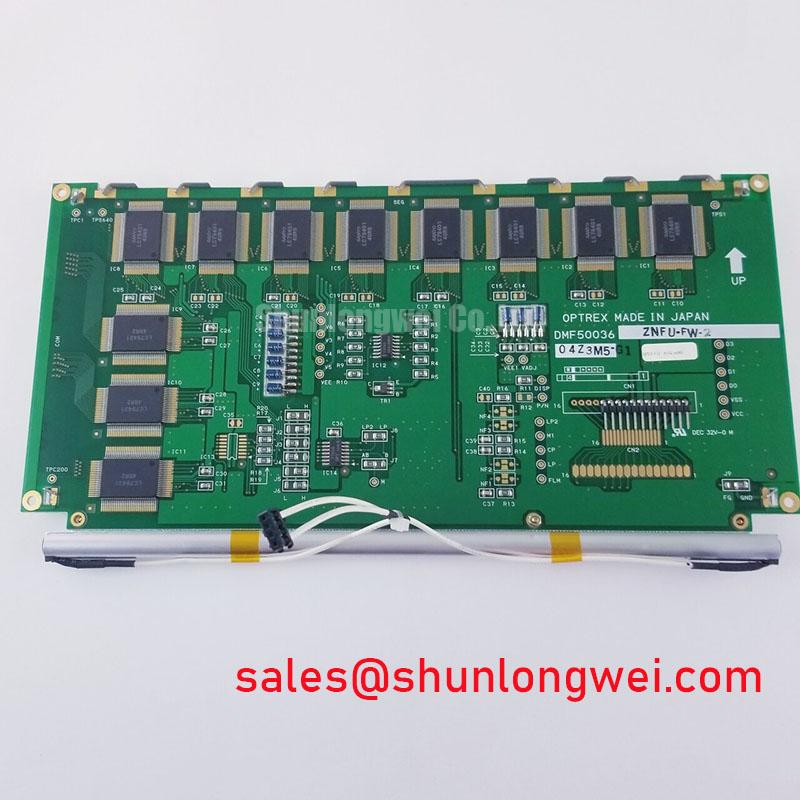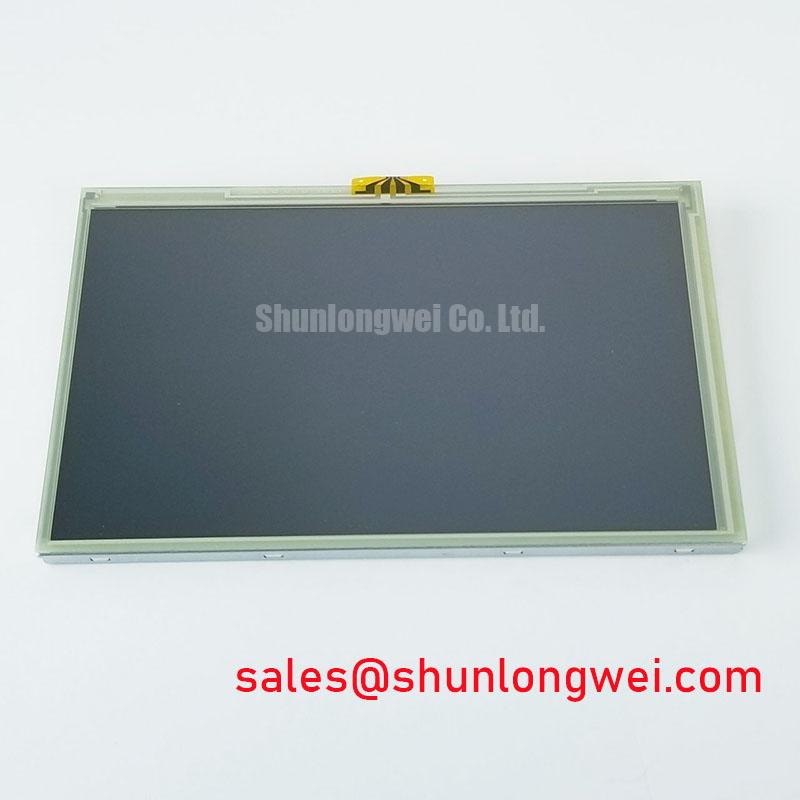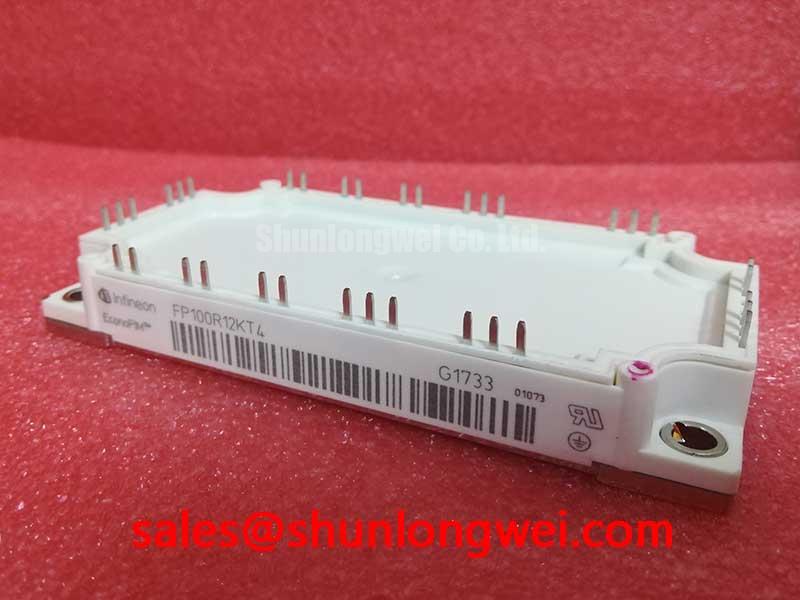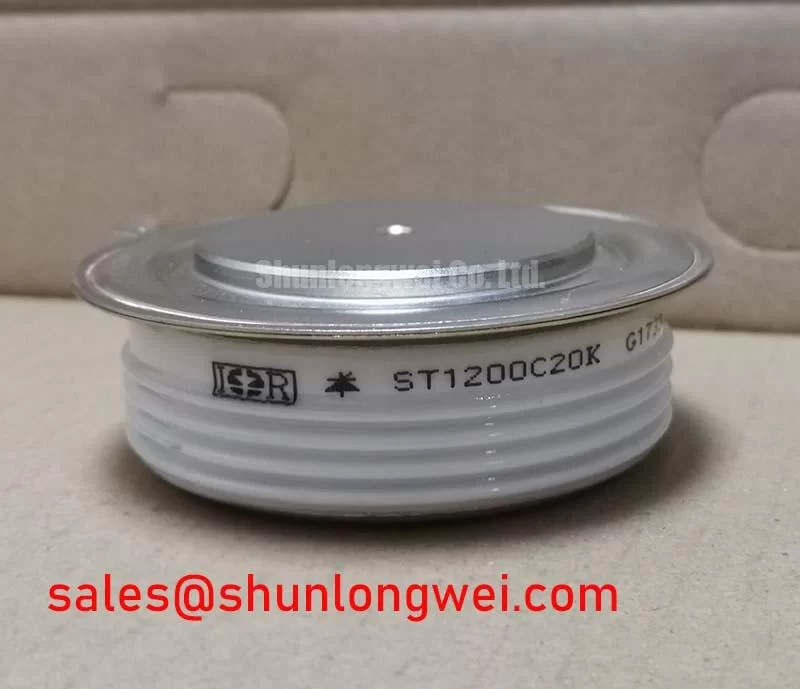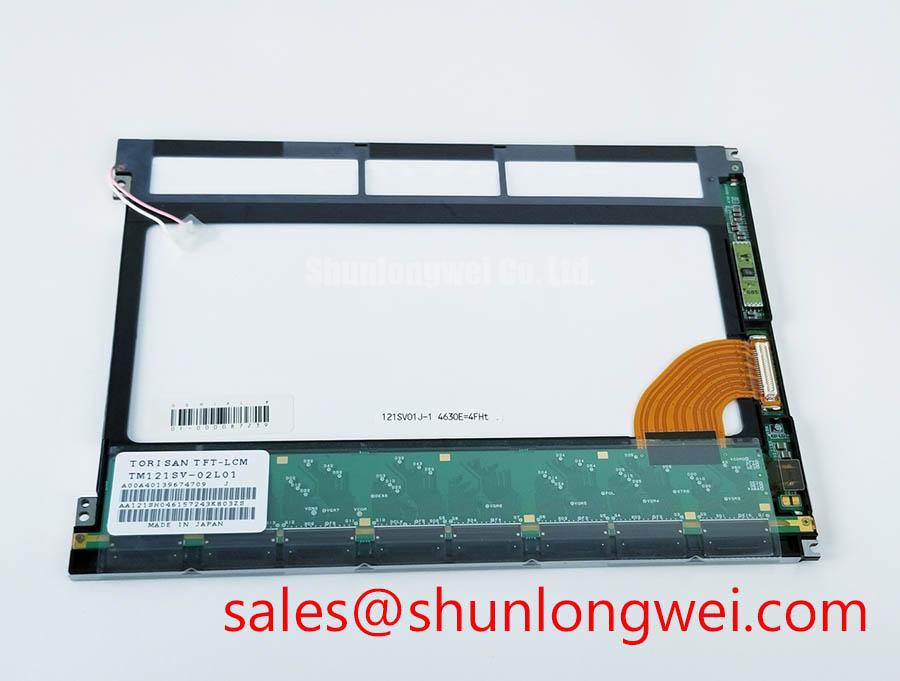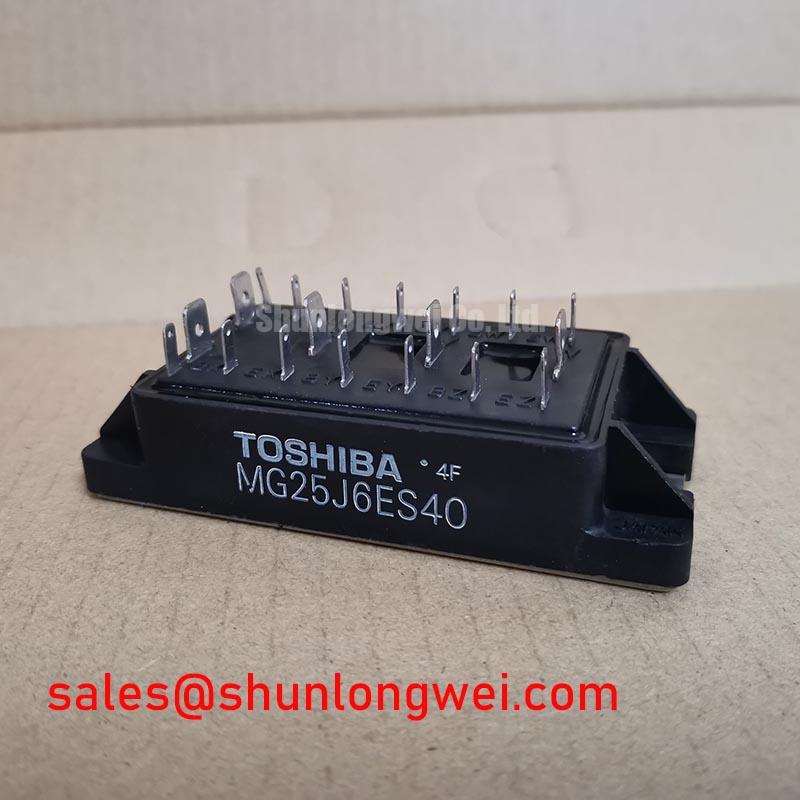SKKT 106B16 E Thyristor Module: Engineered for Thermal Reliability
An In-Depth Engineering Review of the SEMIKRON Thyristor Module
Content last revised on October 16, 2025.
The SEMIKRON SKKT 106B16 E is a thyristor module engineered for robust thermal performance and long-term reliability in demanding line-frequency power control. Featuring key specifications of 1600V | 106A (ITAV) | I²t = 45,000 A²s, this module delivers superior thermal cycling capability and a simplified, safe mounting design. Its high I²t rating ensures system survivability during fault conditions common in industrial motor control applications. For AC controllers and soft starters requiring exceptional thermal robustness and operational longevity, the SKKT 106B16 E is the definitive choice.
Key Parameter Overview
Decoding the Specs for Enhanced Thermal Reliability
The electrical and thermal characteristics of the SKKT 106B16 E are tailored for high-reliability industrial power control. The parameters below highlight its capacity for stable operation under demanding thermal loads and its resilience to electrical transients.
| Parameter | Value | Notes |
|---|---|---|
| Repetitive Peak Off-State Voltage (VDRM, VRRM) | 1600 V | Provides substantial voltage margin for 800V AC line applications. |
| On-State Current (ITAV) | 106 A | (sin. 180; Tcase = 82 °C) |
| RMS On-State Current (ITRMS) | 165 A | (Tcase = 71 °C) |
| Surge Current Rating (I²t) | 45,000 A²s | (Tvj = 130 °C, 10 ms); Critical for surviving motor start-up and fault conditions. |
| Thermal Resistance, Junction to Case (Rth(j-c)) | 0.24 °C/W | Per thyristor; enables efficient heat extraction. |
| Isolation Test Voltage (VISOL) | 3000 V | (1 min.); ensures safety and simplifies system insulation requirements. |
| Operating Junction Temperature (Tvj) | -40 to +130 °C | Wide operating range suitable for harsh industrial environments. |
Download the SKKT 106B16 E datasheet for detailed specifications and performance curves.
Application Scenarios & Value
System-Level Benefits in Industrial Power Control
The SKKT 106B16 E is purpose-built for line-frequency applications where reliability and precise control are paramount. Its design provides tangible value in circuits that experience significant electrical and thermal stress.
A primary application is in industrial Soft Starters for AC induction motors. In this scenario, engineers face the dual challenge of surviving high inrush currents during motor ramp-up and withstanding the cumulative thermal fatigue from thousands of start-stop cycles. The SKKT 106B16 E's substantial I²t rating of 45,000 A²s provides the necessary headroom to handle these repetitive current surges without degradation. Furthermore, its hard-soldered internal construction directly enhances its Power Cycling Capability, a critical factor for extending the service life of equipment that is frequently activated, such as conveyor systems or large fans. This robust build minimizes the risk of solder fatigue, a common point of failure detailed in many IGBT failure analysis guides.
- AC Voltage Controllers: Used for applications like industrial heating and lighting control, where its phase angle control capability enables precise power regulation. The isolated baseplate simplifies mechanical assembly and enhances electrical safety.
- Controlled Rectifiers: Forms the core of DC power supplies and battery chargers, providing reliable and controllable DC output from an AC source. The low thermal resistance is key to achieving high power density.
- Static AC Switches: Provides a robust solid-state solution for switching high-power AC loads, offering a significant lifetime advantage over mechanical contactors.
While the SKKT 106B16 E is ideal for these dual-thyristor configurations, systems requiring a thyristor-diode pair for specific rectifier topologies might consider the related SKKH106/16E. For applications demanding higher current and voltage capabilities, the SKKT162/18E offers a clear upgrade path within the same product family.
Frequently Asked Questions (FAQ)
What is the primary benefit of the isolated copper baseplate on the SKKT 106B16 E?
The isolated baseplate eliminates the need for external insulating materials between the module and the heatsink. This simplifies the mechanical design, reduces assembly time and cost, and improves thermal transfer by removing an insulating layer. It directly contributes to a more reliable and cost-effective thermal management solution.
How does the I²t rating of 45,000 A²s translate to real-world application reliability?
This rating represents the module's thermal capacity to withstand a massive, non-repetitive surge current for a short duration (e.g., 10 ms). In practice, it means the device can survive locked-rotor conditions in a motor or downstream short-circuits without failing, allowing protective fuses to trip. This is a critical parameter for building robust and fault-tolerant power systems.
The datasheet mentions "hard solder" joints. What engineering advantage does this provide over conventional soldering?
Hard soldering uses alloys with a much higher melting point than traditional soft solders. This creates a mechanically stronger bond that is far more resistant to the fatigue and cracking caused by repeated temperature changes (thermal cycling). This directly translates to a longer operational lifetime, especially in applications with frequent on/off cycles or fluctuating loads.
Can the SKKT 106B16 E be used for single-phase and three-phase AC control?
Yes. A single SKKT 106B16 E module contains two thyristors in series, ideal for creating a single-phase AC controller (back-to-back configuration). For three-phase control, three of these modules can be used, with one module controlling each phase, providing a complete and robust solution.
Technical Deep Dive
A Closer Look at the Hard-Solder Construction for Enhanced Operational Lifetime
A critical factor determining the lifespan of any power module is its ability to withstand thermomechanical stress. During operation, the silicon thyristor chip heats up and cools down, causing it to expand and contract. This movement creates stress at the solder interface connecting it to the direct bonded copper (DBC) substrate and baseplate. Over thousands of cycles, this can lead to solder fatigue, micro-cracks, and eventual device failure. Understanding why Rth matters is key to appreciating this challenge.
The SKKT 106B16 E utilizes a hard-solder technology from SEMIKRON to directly combat this wear-out mechanism. Hard solder has a significantly higher melting point and greater mechanical strength than the soft solders used in standard modules. This creates a more resilient joint that can endure a much higher number of thermal cycles before fatigue sets in. This is analogous to the difference between standard road tires and reinforced, heavy-duty tires for industrial vehicles. While both work, the latter is explicitly designed to withstand constant, heavy stress without premature failure. For engineers designing systems like Controlled Rectifiers for industrial plating or welding, where load conditions can vary dramatically, this enhanced reliability is not just a feature—it's a fundamental requirement for achieving a low total cost of ownership.
Strategic Implications for System Design
Integrating the SKKT 106B16 E into a power system is a strategic decision that prioritizes long-term reliability over minimal initial component cost. Its robust construction, featuring hard-solder joints and an isolated baseplate, reduces potential points of failure and simplifies manufacturing, thereby lowering long-term service and warranty expenses. For OEMs building equipment destined for harsh industrial settings or applications where downtime is unacceptable, the engineering principles embodied in this module provide a foundation for a highly dependable and durable end product. The design focus on thermal and mechanical robustness aligns with the industry's continuous drive for more resilient and maintenance-free power electronics solutions.

